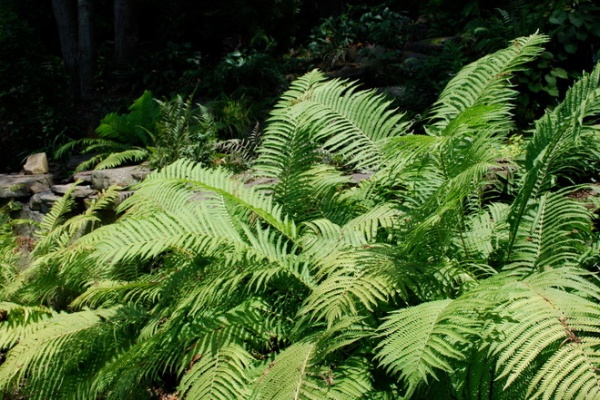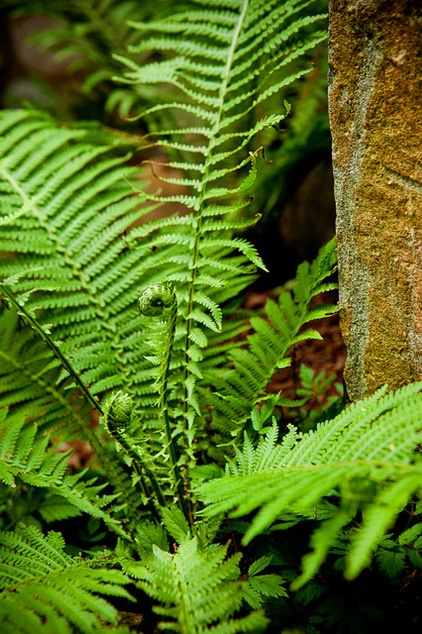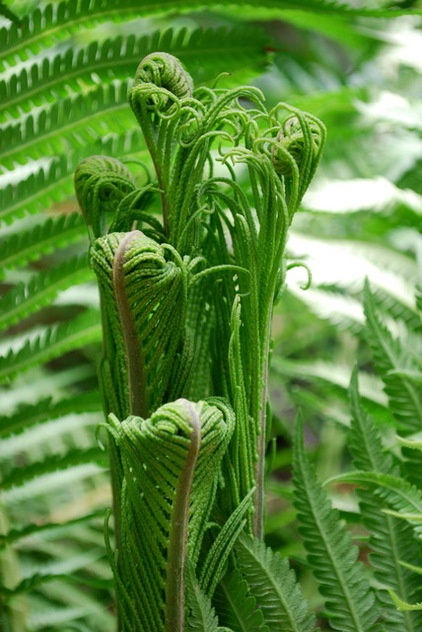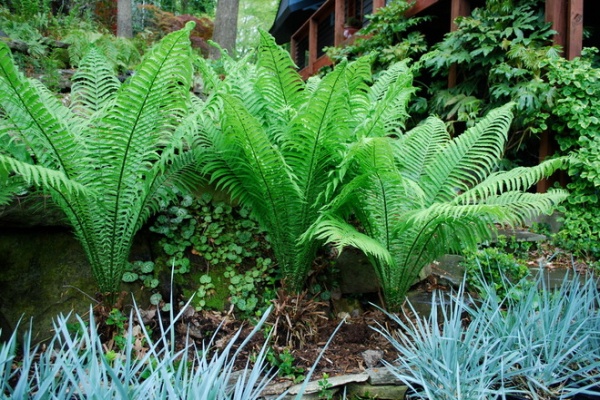Great Design Plant: Ostrich Fern (Matteuccia struthiopteris)
http://decor-ideas.org 08/19/2014 00:13 Decor Ideas
We gardeners can be a fickle bunch, always wanting what we seemingly cannot have. Shade gardeners want more sun; sun gardeners want more shade. There are certain plants, however, that can be employed to bridge the gap so that everyone is happy. Enter ostrich fern.


Botanical Name: Matteuccia struthiopteris
Common Name: Ostrich fern
Origin: Northern United States and Europe, China and Japan
Where will it grow: Hardy to -40 degrees Fahrenheit (USDA zones 3 to 8; find your zone)
Water requirement: Moist to wet soil is best for optimum growth and size.
Light requirement: Partial sun to shade
Mature size: Up to 5 feet tall and 5 to 8 feet wide
Benefits and tolerances: Ostrich fern grows well in wet soil, where few garden plants thrive. If kept wet, this fern will tolerate more sun than most ferns. It spreads well when happy, by rhizomes and by spores. Offspring plants produced by rhizomes appear to be stronger and grow more quickly than plants produced by spores.

Seasonal interest. Ostrich ferns provide spectacular seasonal interest. The young fronds, called fiddleheads, provide structural interest in midspring when they unfurl, as do the fertile fronds when they begin growing in midsummer. I prefer to remove the large nonfertile fronds in the fall after they turn brown, leaving the erect, fertile fronds for winter interest.
These ferns, along with Cardinal twig dogwood (Cornus sericea ‘Cardinal’, zones 3 to 8), line the banks of a creek in my woodland garden. The brown fern fronds complement the red dogwood branches for a wonderful winter display. In early spring I remove these old fronds in preparation for a dazzling spring display of new growth.
When to plant: Spring and fall are the best times to plant ostrich fern.

Distinguishing traits. The plants have plume-like foliage that resembles ostrich feathers; the foliage is one of the largest of the ferns.
How to use it. The vase-shaped structure of the ostrich fern provides dramatic architectural interest in a potentially homogenous woodland garden. It is best to space plants properly to accentuate their structure.
The structure of the ostrich fern is also striking when viewed from above. Consider planting this fern en masse below a raised deck or where it can be appreciated from a large window overlooking a garden.
Planting notes. For optimal growth amend heavy soil with organic material such as mushroom compost, and plant in moist to wet soil.
More: Ferns: A Shade Gardener’s Best Friend
Related Articles Recommended












